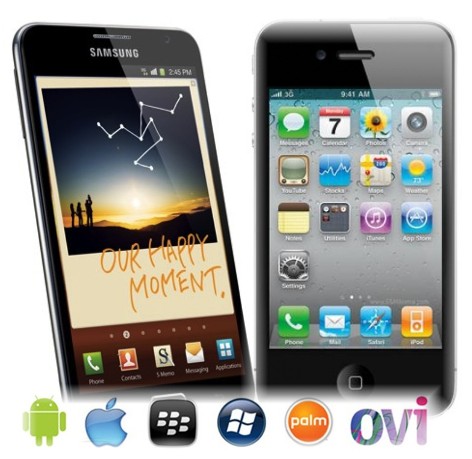|
. “Vodafone
says 66
percent
of its customers use smartphones and by 2013 they’re likely to overtake
PCs as the preferred internet access device.”
Smartphones will be the dominant communications device for New
Zealanders over the next few years as they become more affordable and
embrace most of our digital lifestyle needs.
Sales
of smartphones have almost doubled year on year according to research
group IDC, with falling prices encouraging consumers to upgrade from
standard phones or trade up for more features.
Carriers are offering further incentive with heavily discounted handsets
in exchange for contracts although
the
battleground is now moving from specific hardware to operating systems,
software and services.
Beyond
features like browsing, GPS, camera, big storage, touch and display
quality, customers want ease of integration with other devices
and
screeds of applications (apps) to download.
Australian-based analyst Telsyte, claims smartphones will be the primary
mobile device for New Zealanders by 2015, with uptake more than doubling
to around 90 percent.
Research director Foad Fadaghi believes Apple’s iPhone will retain
leadership until around 2014, with Android devices from HTC, Samsung,
Sony Ericsson, Motorola, Huawei and others continuing to grow their
market share.
He
says Nokia is a dark horse adopting Windows 7 and while Blackberry sales
are slowing, it will retain a niche.
Raising
the bar
Vodafone New Zealand confirms smartphone use more than doubled the
traffic on its network in the year to June 2011.
It says 66
percent
of its customers use smartphones and by 2013 they’re likely to overtake
PCs as the preferred internet access device. Around 50 percent of mobile
traffic today comes from Facebook.
In the September 2011 quarter Samsung became the world's top smartphone
maker with sales rocketing 44 percent to 27.8 million units while
Apple's iPhone sales dropped by 16 percent to 17.1 million.
Samsung is a relative newcomer but already has 23.8 percent market share
with its Android powered Galaxy line of products, the latest of which is
the Galaxy Note mobile device.
However it would be misleading to suggest Apple’s smartphone fortunes
are fading — it has been the trendsetter since it first launched the
touchscreen iPhone in 2007. The dip in sales was simply the market
anticipating its new iPhone 4S, which sold a record four million units
in the US in its first three days.
OS face off
Litigation about who owns what, with Microsoft and Apple challenging
certain of the open Android patents, has raised eyebrows at HTC and
Samsung. Meanwhile Google promised to “supercharge the Android
ecosystem” shortly after it agreed to pay $US12.5 billion for mobile
phone pioneer Motorola Mobility.
With so much
investment developing the iPhone, Android and Microsoft mobile operating
systems, analysts have been outdoing each other trying to guess where
it’s all heading.
To date
Apple’s iPhone and Android phones make up
about half of the smartphone market. IDC expects Android to double its
share to 40
percent
by the
end of this year and Apple's iOS to grow five points to around 20
percent.
The
market is increasingly driven by the availability of clever downloadable
applications; Windows and Android currently have 300,000 apps each while
Apple has 500,000.
A wide
selection of leading edge smartphones are in New Zealand stores for the
Christmas rush. Among them the 16Gb version of Apple’s iPhone 4S selling
for around $1000 with HD video recording, a new camera and Siri, the
voice activated intelligent assistant.
Samsung’s latest offering is the 1.4GHz Omnia W running the new
Microsoft’s new Mango operating system and featuring People Hub
technology, optimised for social media. And 2degrees has launching the
first Maori language smartphone, called Te Reo. The Ideos X3 reflects
the Maori investment in 2degrees by Hautaki Trust. |
